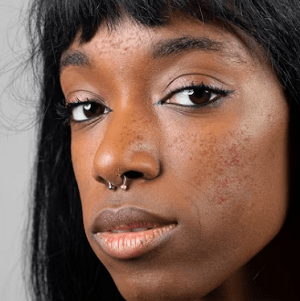Diagnosing rosacea in patients of color presents unique challenges, according to Dr. Hilary Baldwin, who spoke at the Skin of Color Update in New York City. Baldwin, the medical director of Atlantic Health’s Acne Treatment & Research Center, emphasized that rosacea is not limited to women of Northern European descent, as commonly believed. She highlighted that rosacea affects about 10% of the US population, including men and people of color.
Baldwin pointed out that erythema, or redness of the skin, is harder to detect in patients with darker skin tones, which may lead to underdiagnosis. She noted that dermatologists should look for other symptoms such as burning, stinging, itching, and skin sensitivity. A study cited by Baldwin found that 2% of patients with rosacea were Black, 2.3% were Asian or Pacific Islander, and 3.9% were Hispanic or Latino. Globally, rosacea affects up to 40 million patients of color, particularly in Africa, Asia, and South America.
The shift from categorizing patients by rosacea subtypes to focusing on detailed phenotypic descriptions is crucial for accurate diagnosis. Baldwin stressed the importance of examining patients for erythema, papules, pustules, telangiectasias, and ocular symptoms. She acknowledged that challenges arise in patients with darker skin, where redness is less visible, making diagnosis more difficult.
This research underscores the need for dermatologists to be vigilant in recognizing rosacea in patients of color to ensure they receive appropriate treatment.
See “Dermatologist Dissects Rosacea Diagnosis Challenges Among Patients of Color” (September 17, 2024)



